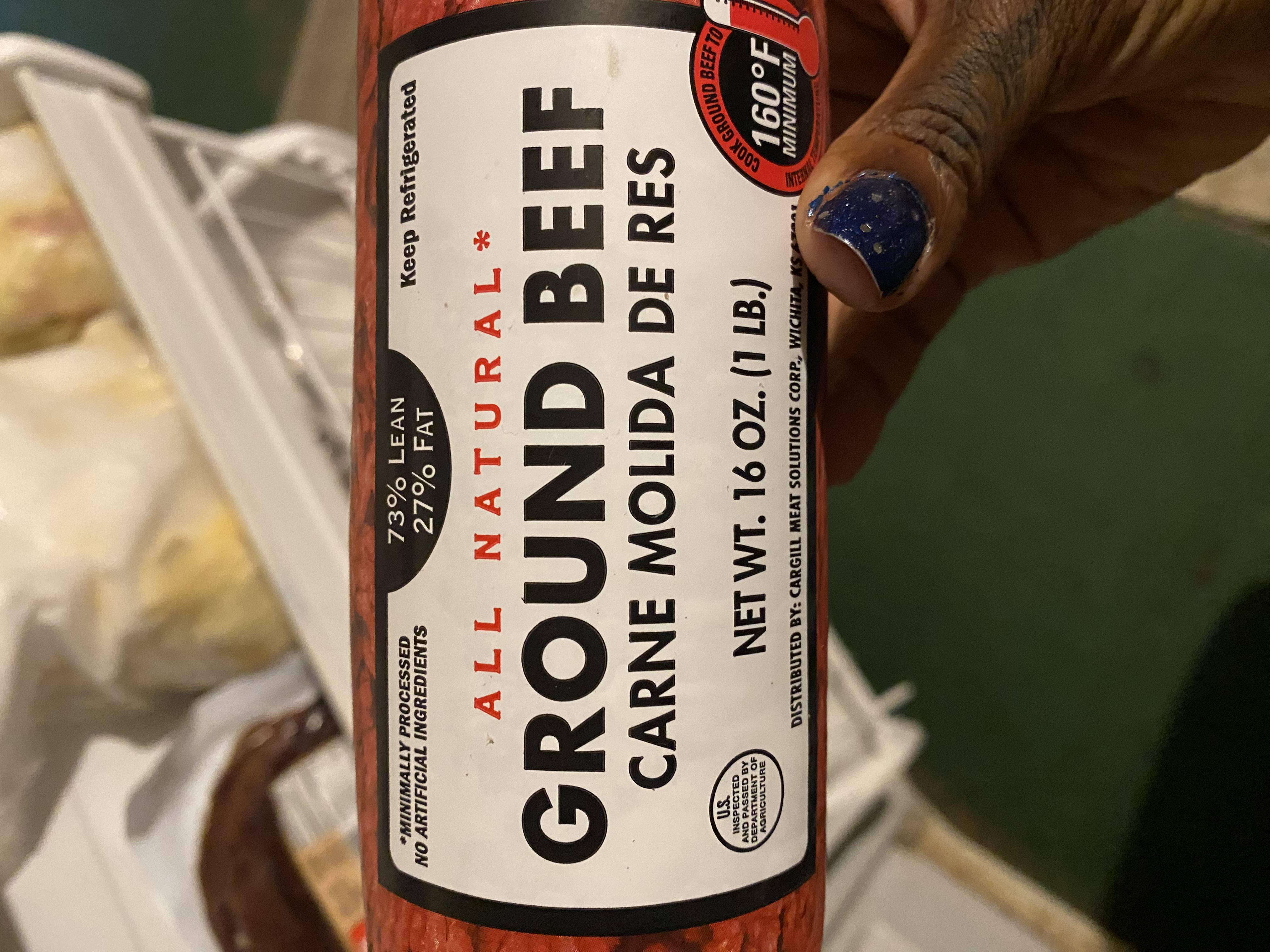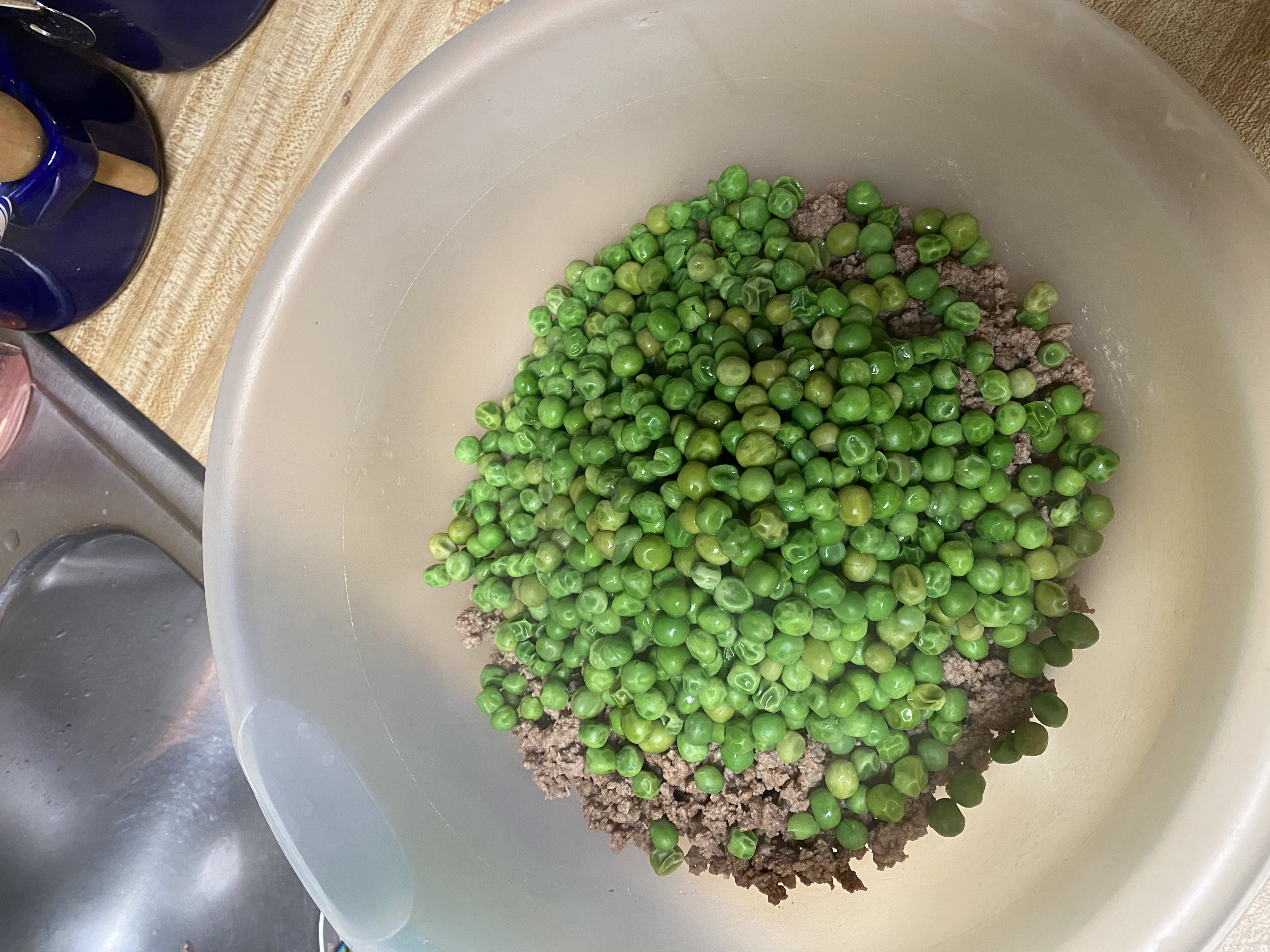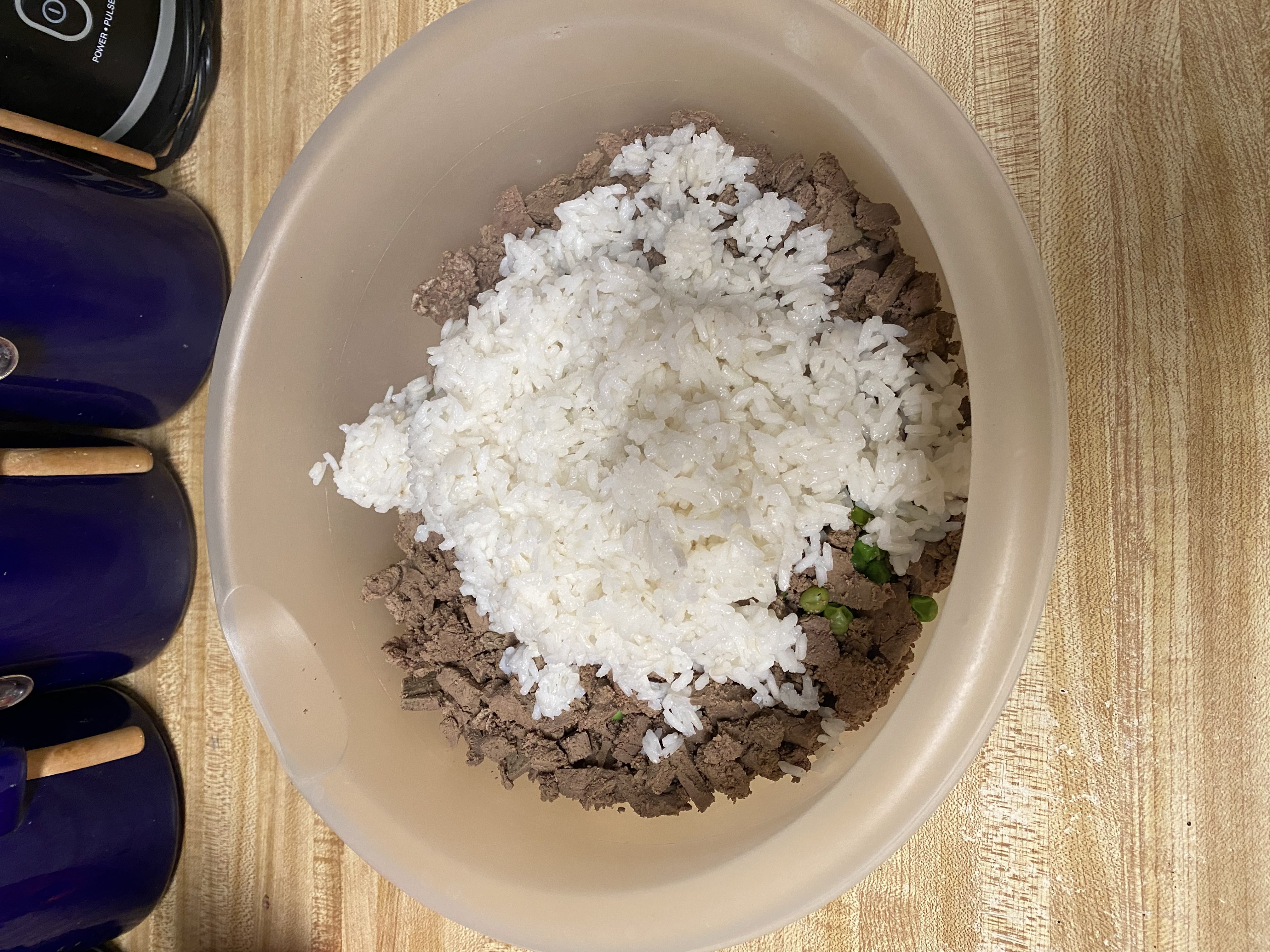Why Homemade Dog Food?
Do you ever wonder what goes into the kibble you feed your dog? When I started making meals for my girls, I realized I could offer them more than just store-bought food. With a homemade diet, I know exactly what they’re eating and that each ingredient plays a role in their health. Preparing food for my dogs is more than just a chore; it’s my way of showing them love, care, and commitment to their growth, making sure our pack thrives.
*Updated December 2024: to provide more alternatives, important notes on consulting a veterinarian, and expanded details about the nutritional benefits of each ingredient. Ensuring your dog’s health and safety remains a top priority!
Ingredients:
- 1 lb ground beef
- 1/4 lb calf liver (see note for alternatives)
- 1/2 cup frozen peas (alternatives provided)
- 1 cup cooked white rice
Cooking Instructions

Preparing the Calf Liver: I start by defrosting the calf liver and draining any excess liquid. Then, I place the liver in a pot with enough water to cover it and bring it to a boil, cooking it for about 15 minutes. Once it’s fully cooked, I let it cool slightly, then cut it into small chunks. This makes it easier for my girls to digest, helping them avoid any stomach upsets from larger piece’s.

Liver’s Nutritional Value: Liver is rich in vitamins like B12, A, and D, all essential for a dog’s energy and immune system. The high iron content supports red blood cell health, while the amino acids promote muscle and tissue growth. This superfood provides a nutritional boost that kibble alone just can’t match.

Alternative to Liver: If your dog doesn’t tolerate liver, you can try small amounts of cooked chicken hearts or gizzards. However, avoid feeding excessive organ meats, as they can be high in fat and certain vitamins.

Cooking the Ground Beef: Next, I brown the ground beef in a pan over medium heat until fully cooked, draining any excess fat once finished. Using ground beef as the primary protein gives my dogs a balanced source of energy and helps maintain their muscle mass, especially important if they’re active.

Beef’s Nutritional Benefits: Ground beef is a quality protein source, packed with amino acids that support muscle maintenance and repair. The natural fats keep them satisfied longer, and the minerals like zinc and iron keep their coat shiny and skin healthy.

Alternative to Beef: If beef isn’t ideal for your dog, ground turkey or chicken is also a great protein option.

Adding the Vegetables: Frozen Peas: While the beef is cooking, I boil the frozen peas in a small pot of water for about 5 minutes, then drain them. Once they’re cool, I add them to the beef. Peas are a healthy carbohydrate option with fiber, vitamins, and minerals, helping to round out the meal.

Peas’ Nutritional Perks: Frozen peas are loaded with fiber, essential for smooth digestion, and they contain antioxidants that promote joint health. Adding veggies introduces variety to their diet and keeps their taste buds curious.

Alternative to Peas: If your dog doesn’t like peas, consider using diced carrots, cooked green beans, or pumpkin, as these are also dog-safe vegetables that offer fiber and nutrients.

Cooking the Rice For the rice, I rinse it thoroughly before boiling it in water for about 15min. Once cooked, I let it cool slightly and mix it with the beef, liver, and peas. White rice is easy on their stomachs and provides a good source of carbohydrates, giving them energy for playtime.

Rice’s Digestive Benefits: Cooked white rice is gentle on the stomach, making it perfect for dogs with sensitive digestion. The carbohydrates give them an energy boost, keeping them lively and satisfied throughout the day.

Alternative to Rice: For a grain-free option, try boiled sweet potatoes or quinoa, which offer similar benefits without grains.

Bringing It All Together: Why This Meal Matters
Each time I make this recipe, I’m reminded of how I’m proactively caring for my girls. By choosing quality ingredients and preparing them with care, I’m making sure my girls get a nutritious, delicious meal that respects their needs as much as I would for any family member. This meal is more than food; it’s about health, happiness, and the bond that makes us a pack.
Important Note: Consult Your Veterinarian
Before introducing new ingredients to your dog’s diet, always do your due diligence and consult with a veterinarian. This recipe is a great starting point for many, but each dog is unique and has specific dietary needs. A veterinarian can guide you on portions, suitable ingredients, and any potential allergies. Avoid any unexpected health issues by ensuring the meal aligns with your dog’s health requirements.
Alternatives and Variations for Your Dog’s Preference
For dogs who may have allergies or specific tastes, feel free to swap in other meats, veggies, or grains. The joy of homemade meals is that they can be tailored to your dog’s needs and preferences. Have fun experimenting, but always keep your vet in the loop and prioritize your dog’s health with each meal.
Do you see your dogs as family too? What would you add to make their meals as nourishing as possible? Preparing homemade meals may take a little more time, but the benefits it brings to their lives and the joy it brings to mine make it all worth it.
Affirmation
“I am a loving and attentive pet parent, nourishing my dogs with care and intention, ensuring our pack thrives together in health and happiness.”
Write to y’all soon
Jordy


